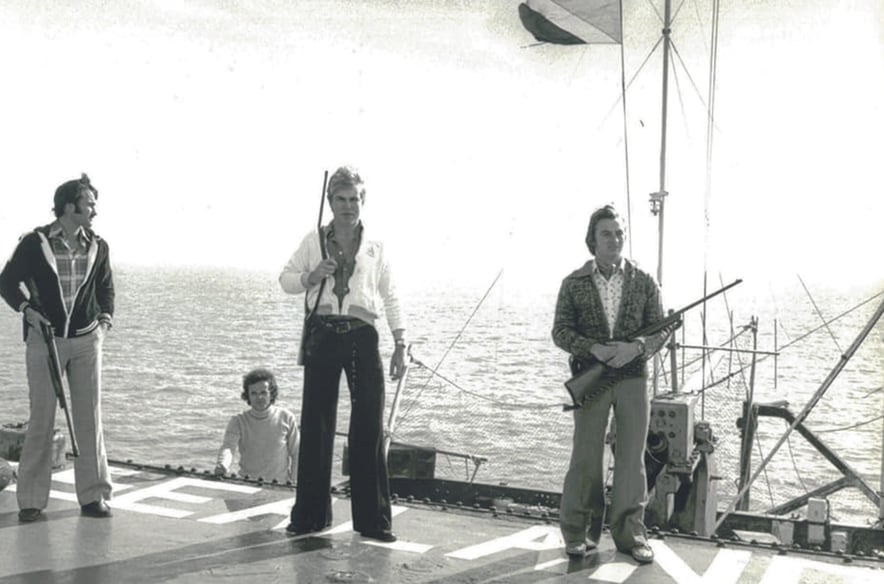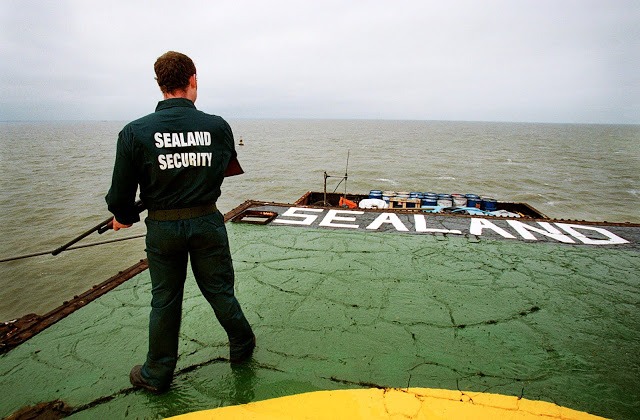

Sealand
Armed guard surveying Sealand waters
Image from defactoborders
Born in war
HM Fort Roughs is a naval vessel belonging to the Royal Navy and installed on a sand bank off the Tames estuary, roughly 7 miles off the coast.
Early alert installation, the fort is home to 300 sailors and is armed with two 94mm canons and two 40mm Bofors AA guns, it's purpose is the interdiction of german planes and mine laying boats. It's part of 4 identical forts designed by civil engineer Guy Maunsell in the early 1940s.
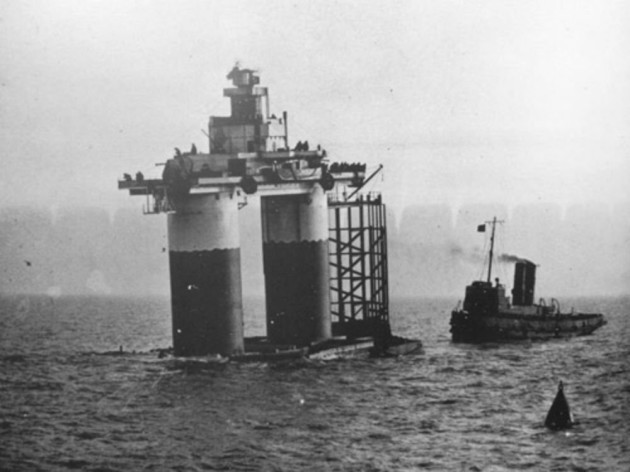

HM Fort Roughs being towed to it's current location and sunk to lay on the sand bank
Picture from the decommissionned Sealand.org, seen on businessinsider
Let to derelict, but not for long
In international waters, Fort Roughs is not under british jurisdiction at the time, the limit being 3 miles from the coast.
With no outstanding purpose after the war, the fort stays in use by the Navy until 1956 when all personnel leave the premices.
Fort Roughs become known as the Roughs Towers on admiralty maps.
The 4 Navy forts, with 3 other smaller ones given to the Army, are left to the elements dor some years, waiting for their fate.

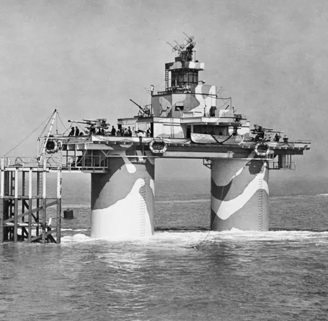
HM Fort Roughs in all it's military glory, take note of the display of canons
Picture from alts
Blowing of Sunk Head fort by the british in 1967
The 1960s saw the birth of a social rebellion mouvement, "pirate radios" are airing illegally pop music. Much loved by the public who's only entitled to programs deemed boring from the BBC, those radio stations multiply.
Airing of those is strictly forbidden and Her Majesty's police is tracking the DJs without mercy.
Exploiting a loophole that limit british jurisdiction to 3 miles off the coasts, some stations begin transmitting from boats anchored at sea.
It's time for the Maunsell forts to live again as some DJs start to occupy them. Roughs Towers is only a logistical point at first, used by one pirate radio's team to land their helicopter, Radio Caroline.

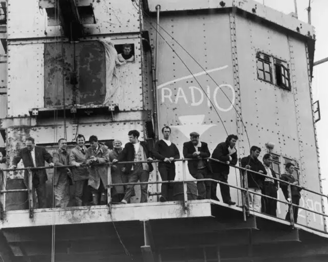
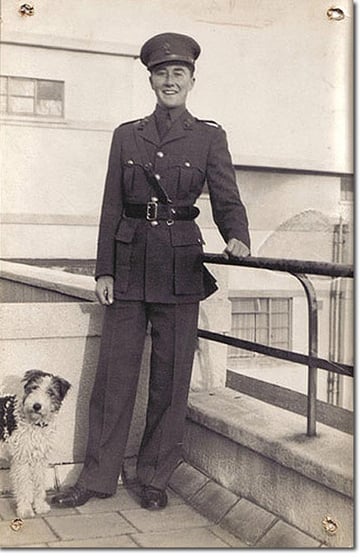

Radio Sutch in the Shivering Sands fort
Seen on alts, incorrectly listing the picture as one of Roughs Towers
"Paddy" Roy Bates in the Royal Fusiliers
Picture from britishempire
Though, Roughs Towers is occupied by Racio Caroline's crew, which does not frighten Major Bates.
At the end of 1966, Bates land on the fort and install his equipment. Two versions appear for the event, first it's said that he used the end of year celebrations to enter the place while the crew was back on mainland to see their families, or on another account, Roy brawled his way to the plateform, evicting the remaining crew.
Radio Essex will never rise again because of the 1967 Marine broadcasting offences act that deems illegal all emiting or pirate radios, no matter the distance at sea.
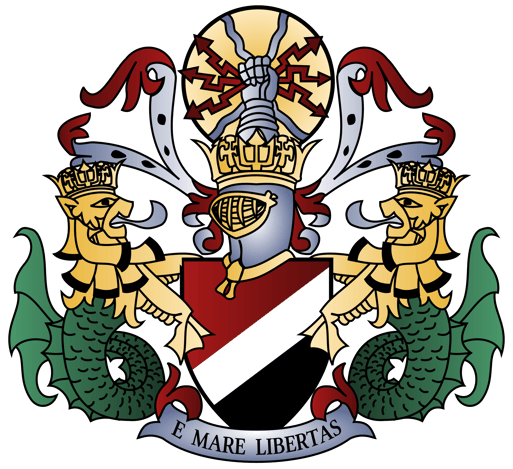

Sealand's coat of arm, bearing the motto "From sea, Liberty"
Seen on wikipedia
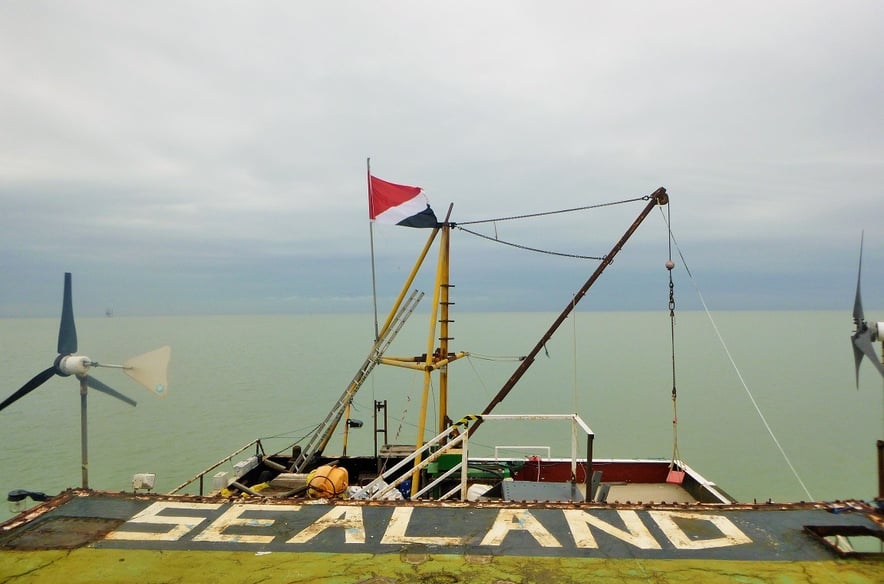

Sealand's flag floating over its territory
Picture from defactoborders
To further install their independance, Sealand is provided a currency, passports, postal stamps, a chart and even an anthem (a very 70's one).
If you're into that kind of thing, you can purchase a title from Sealand and be Lord or Baron of the principality by visiting https://sealandgov.org/shop/. Full disclosure, I have no link to Sealand whatsoever so support them or not on your own account.
Sealand principality was born from one british subject's boundless romantism whom dreamed of making his spouse a princess.
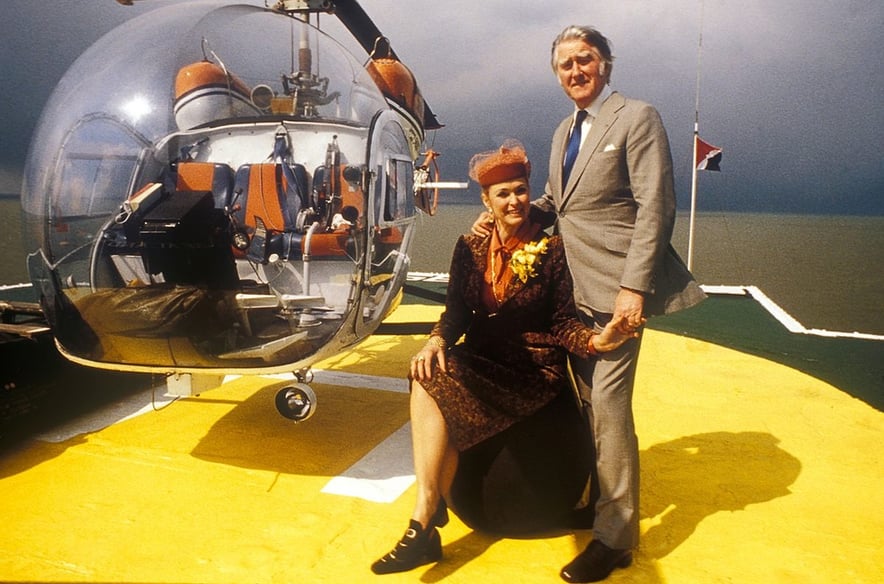

Princess Joan and prince Roy of Sealand, on their son's wedding day
Picture credit alamy
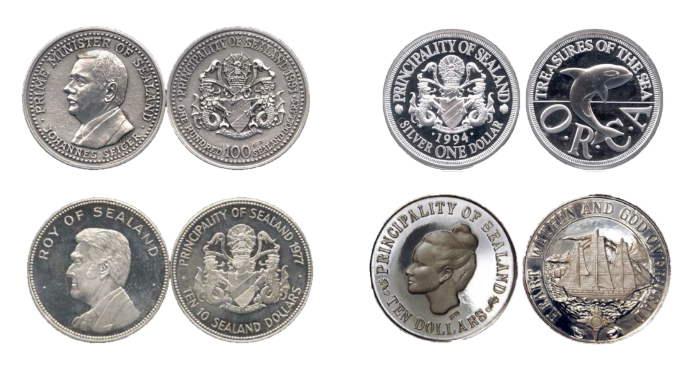

Sealand minted currency, it's holding no merchant value but some collectors one
Fire over the waves
Smallest nation in the world, Sealand is not the most pacifist, far from it.
After a birth surrounded by conflict, it was bound for fights.
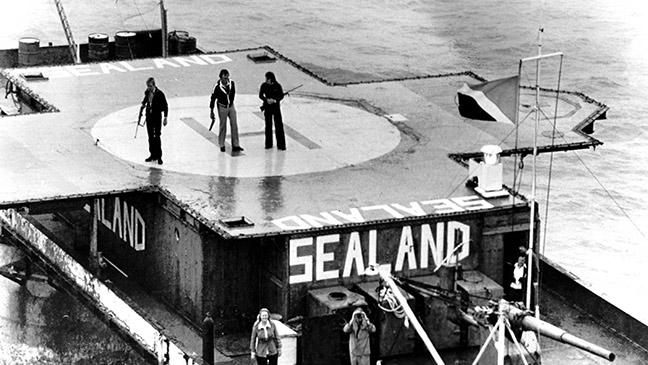

Right after the declaration of independance, sealanders are ready to defend their land
Picture from www.home


Sealanders, armed and ready to defend the principality
Picture for the official site sealandgov
Sealand national anthem, synths on the seas
To go a little further, Roy's young son, now Prince and of a venerable age, has wrote a book on the events; "Holding the fort"
On the subject of pirate radios, I can only advise you to watch the great film; "The boat that rocked" and it's fabulous soundtrack.
That's when a highly colorful bloke enters the story, Roy Bates, and he will be instrumental to Sealand.
Patrick Roy Bates saw the light of day in 1921 in Essex. He served in the british army's Royal Fusiliers until he reached the rank of Major, distinguishing himself in North Africa and at the battle of Monte Cassino.
Adventurer and iconoclast, he launch Radio Essex from one of the Maunsell forts, Knock John.
Sought after by the authorities that wishe to silence his station, he is sentenced in 1966 because he's transmitting from within the 3 miles distance.
Wanting to escape legal action against him, he chooses the Roughs Towers, an identical fort to Knock John but situated outside the 3 miles border.
Birth of a nation
Hopeless romantic and adventurer, Bates sees way ahead.
On 2 september 1967, he is joined by his children, a 16 years old daughter, a 14 years old son and his wife Joan on her birthday.
Claiming Ius Gentium, or the Law of nations, he declare on this symbolic day the creation and independance of the principality of Sealand.
His wife becames princess Joan.
At the heart of the 60s, rivalry goes hard between radio stations and Radio Caroline is not happy to have been evicted by Roy like that.
Attempting to storm the fort from the sea, they are driven away by small arms fire and Molotov cocktails from Roy and his yound son.
Called to investigate, a Royal Marines vessel suffers warning shot coming from Roughs Tower after it wen too close to the plateform.
In august 1978, as the prince couple is away for business, a full military coup is launched against Sealand.
Lead by the principality prime minister, Alexander Achenbach, a group of german and dutch mercenaries storm Sealand from boats and an helicopter, capturing Roy's youg son and keeping him prisonner for a few days.
Alerted, Major Bates calls his friends and put an operation on the way to retake its land.
Fast roping from an helicopter onto the plateform, Bates and his team attack the mercenaries, firing shotgun shots towards them. Seeing that, the group surrender quickly to the prince.
Using armed conflicts legislation, Bates hold them as prisonners of war, releasing them after some time as the Geneva convention states. Only Achenbach is hold in a cell, having a Sealand passport. He will be freed some time later, after a german diplomat was sent to negociate his release.
